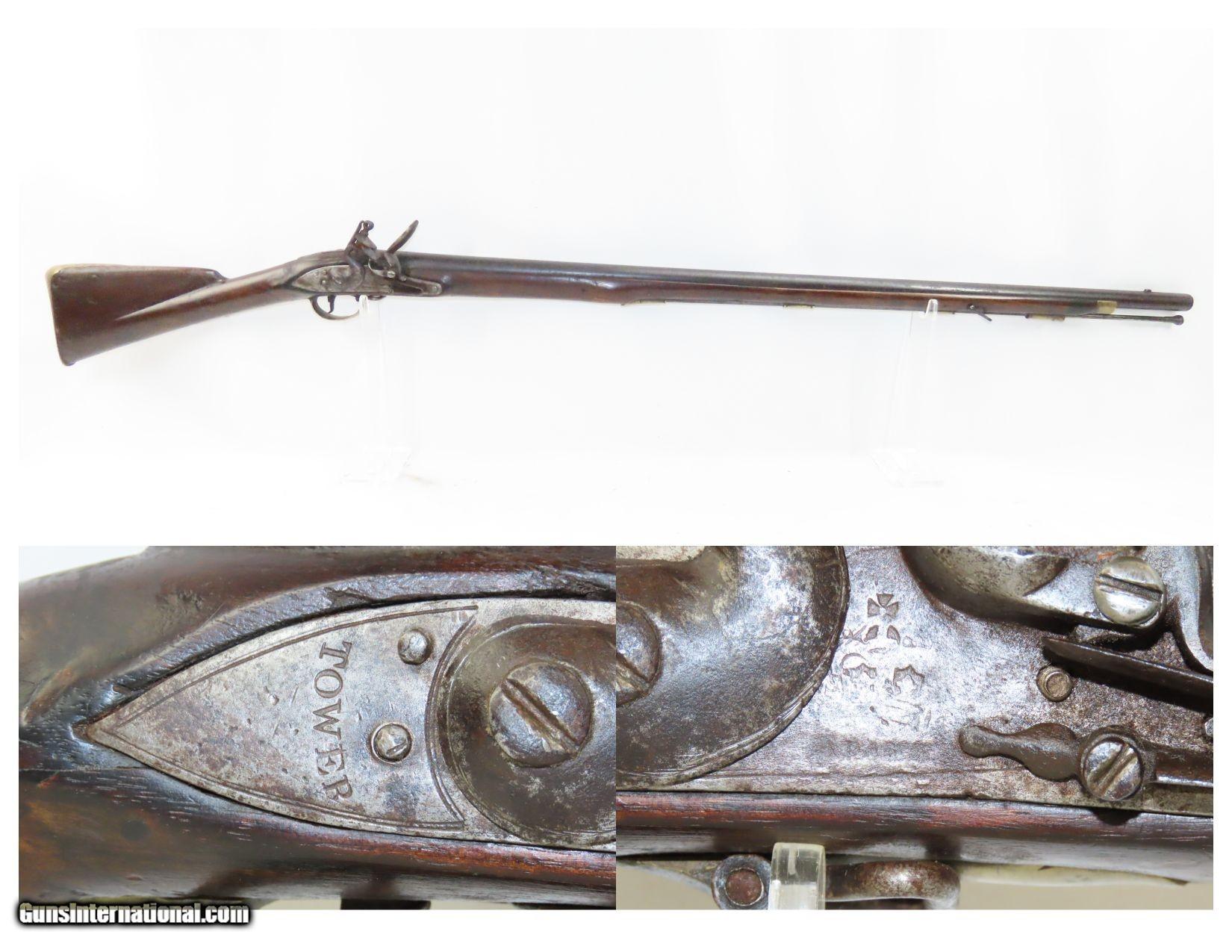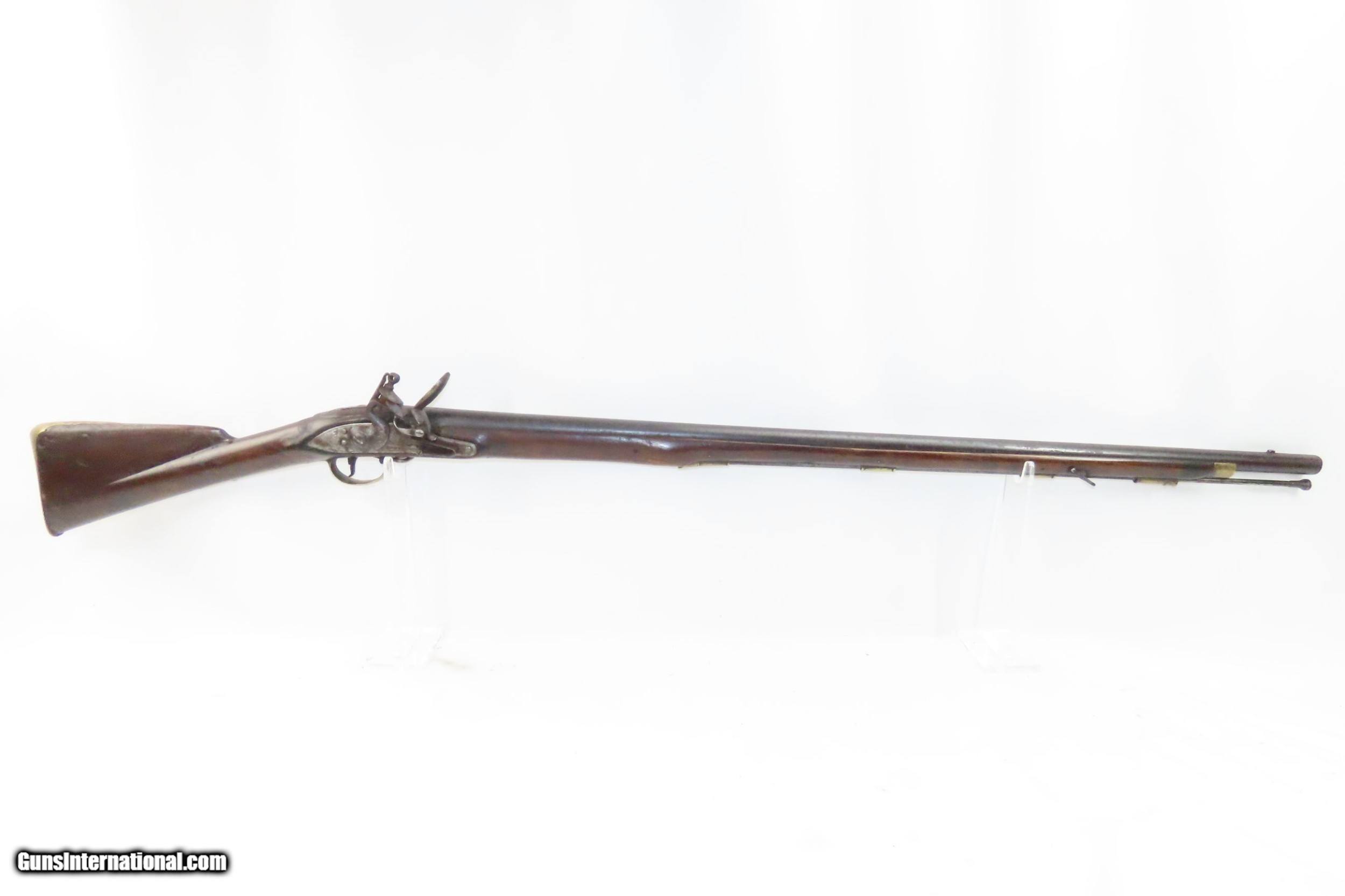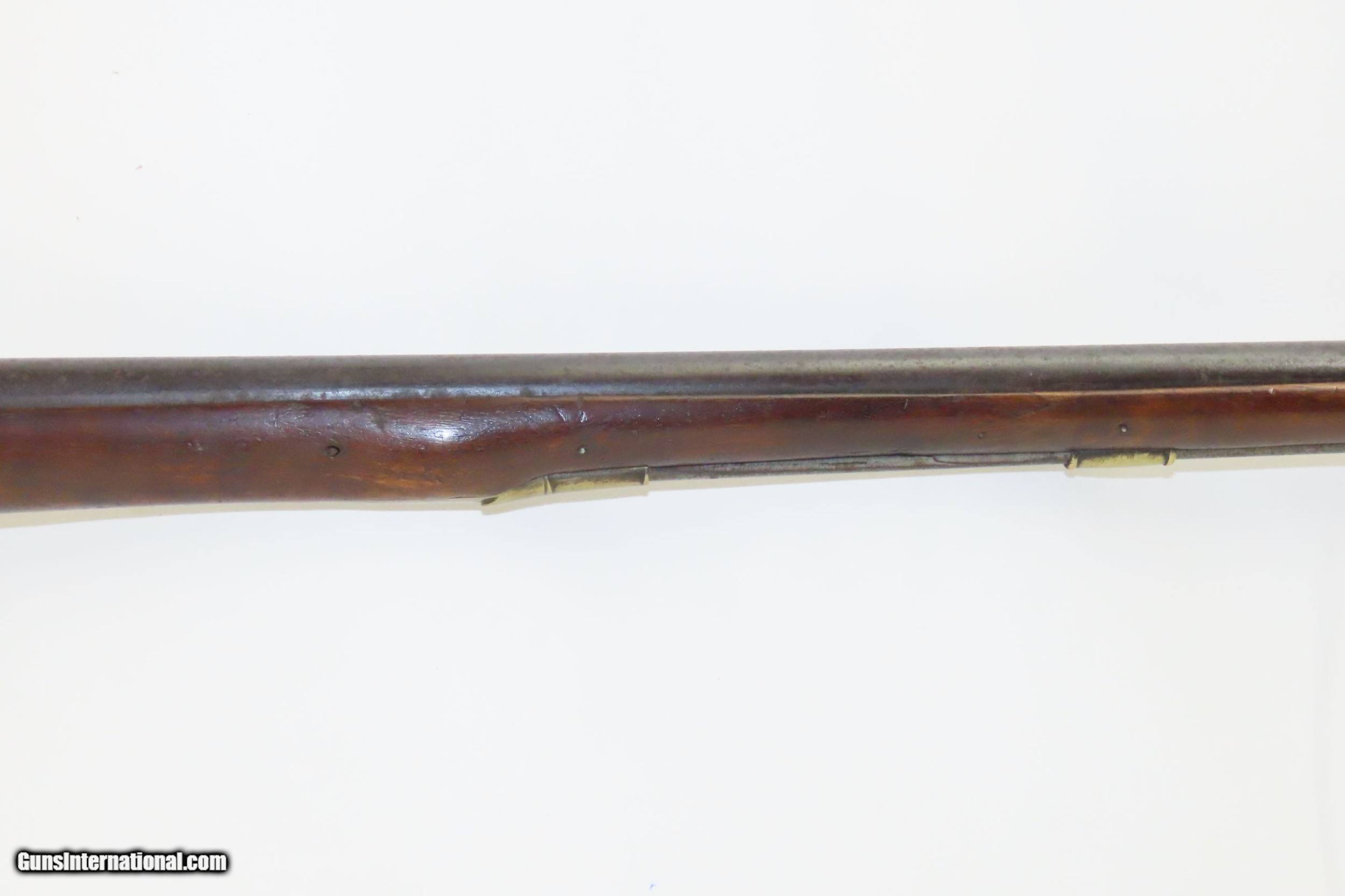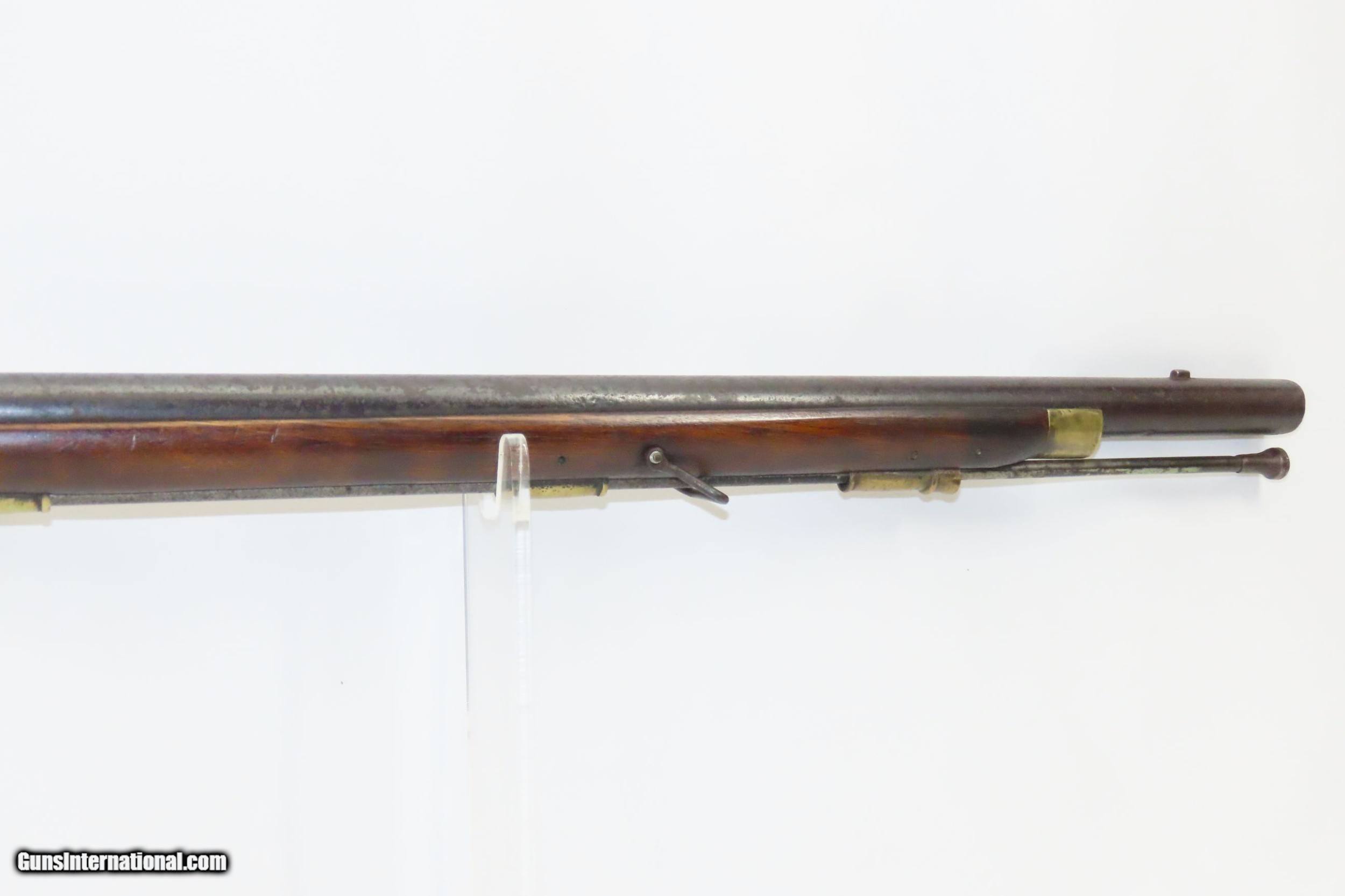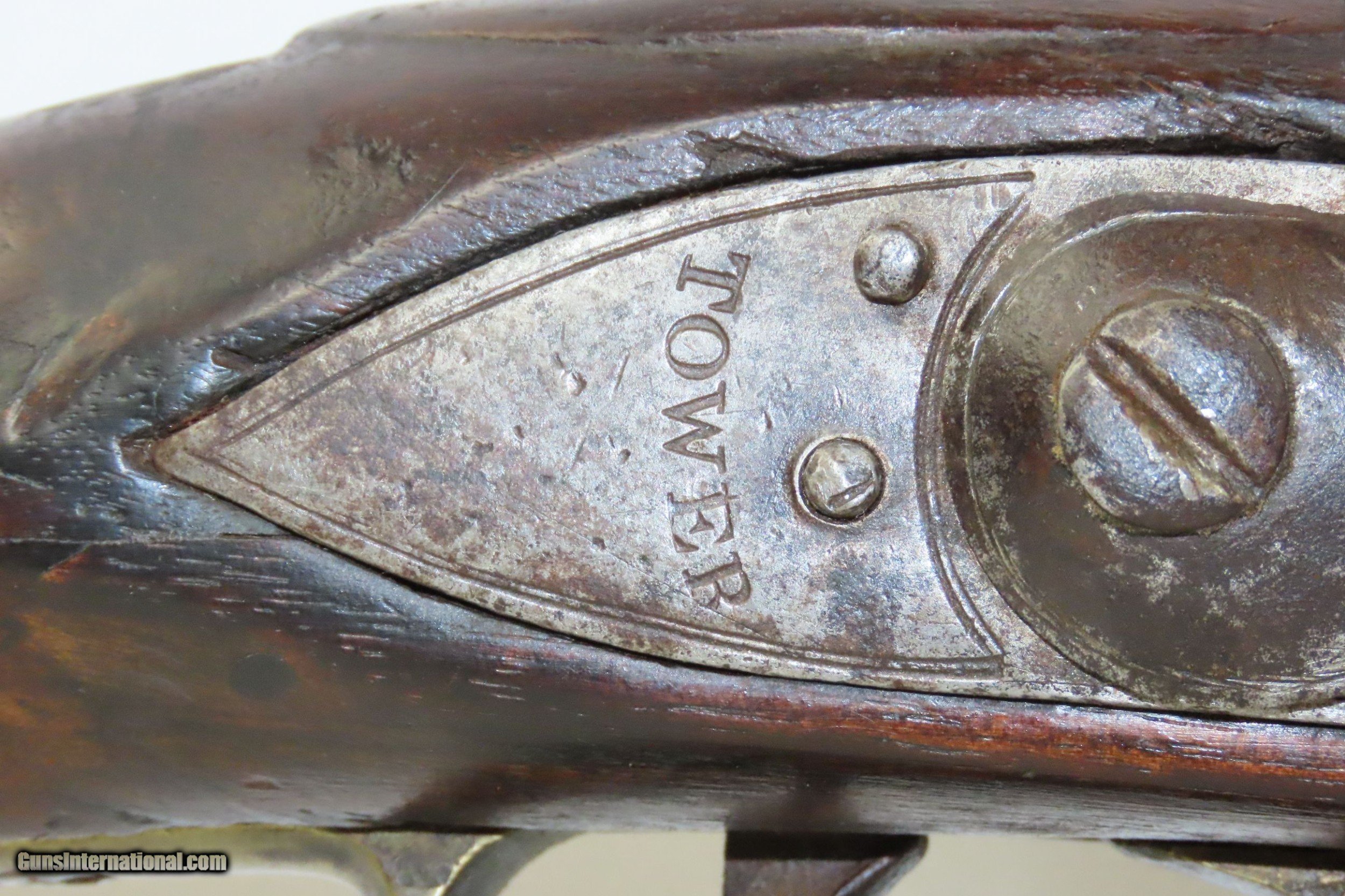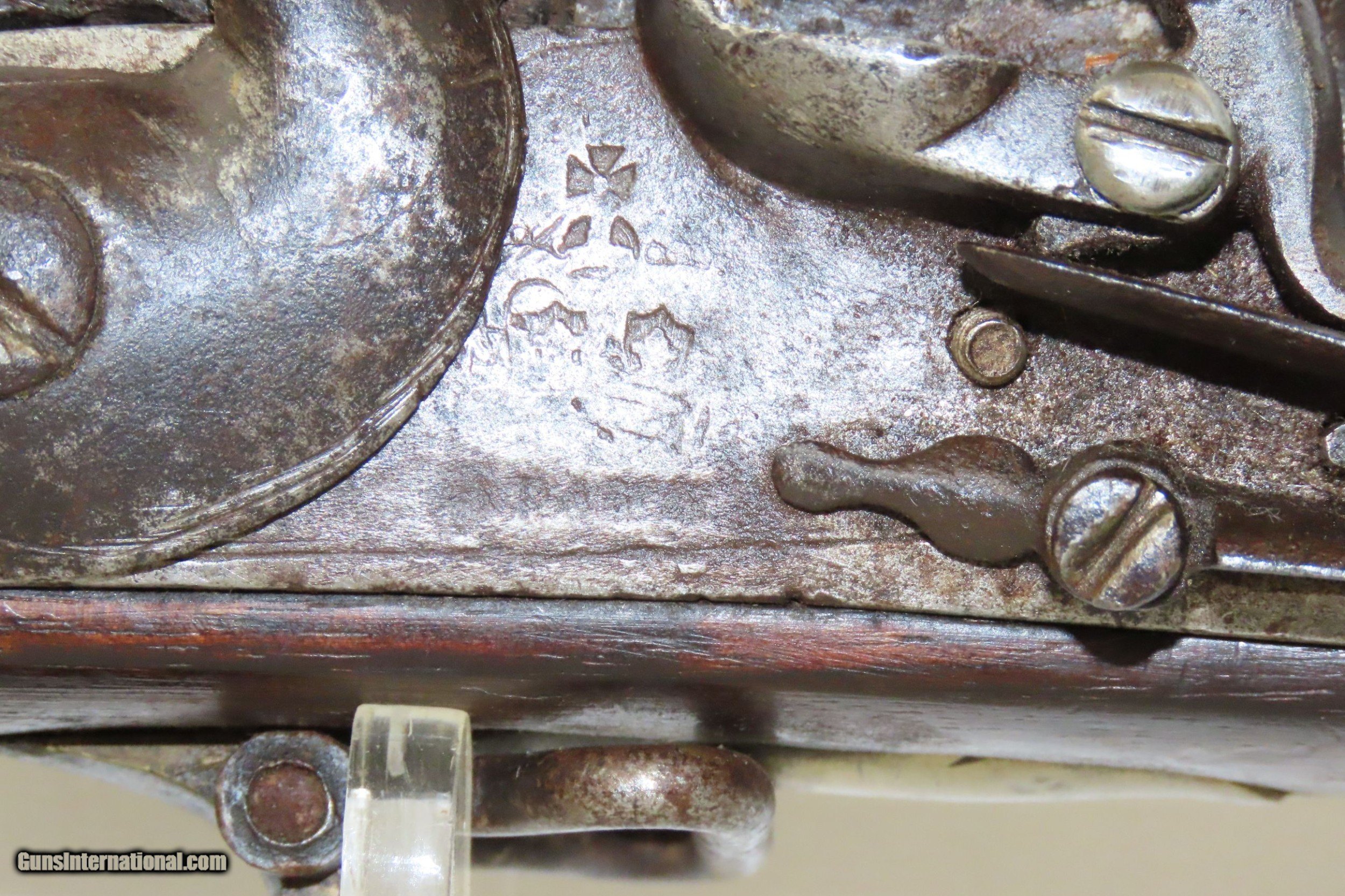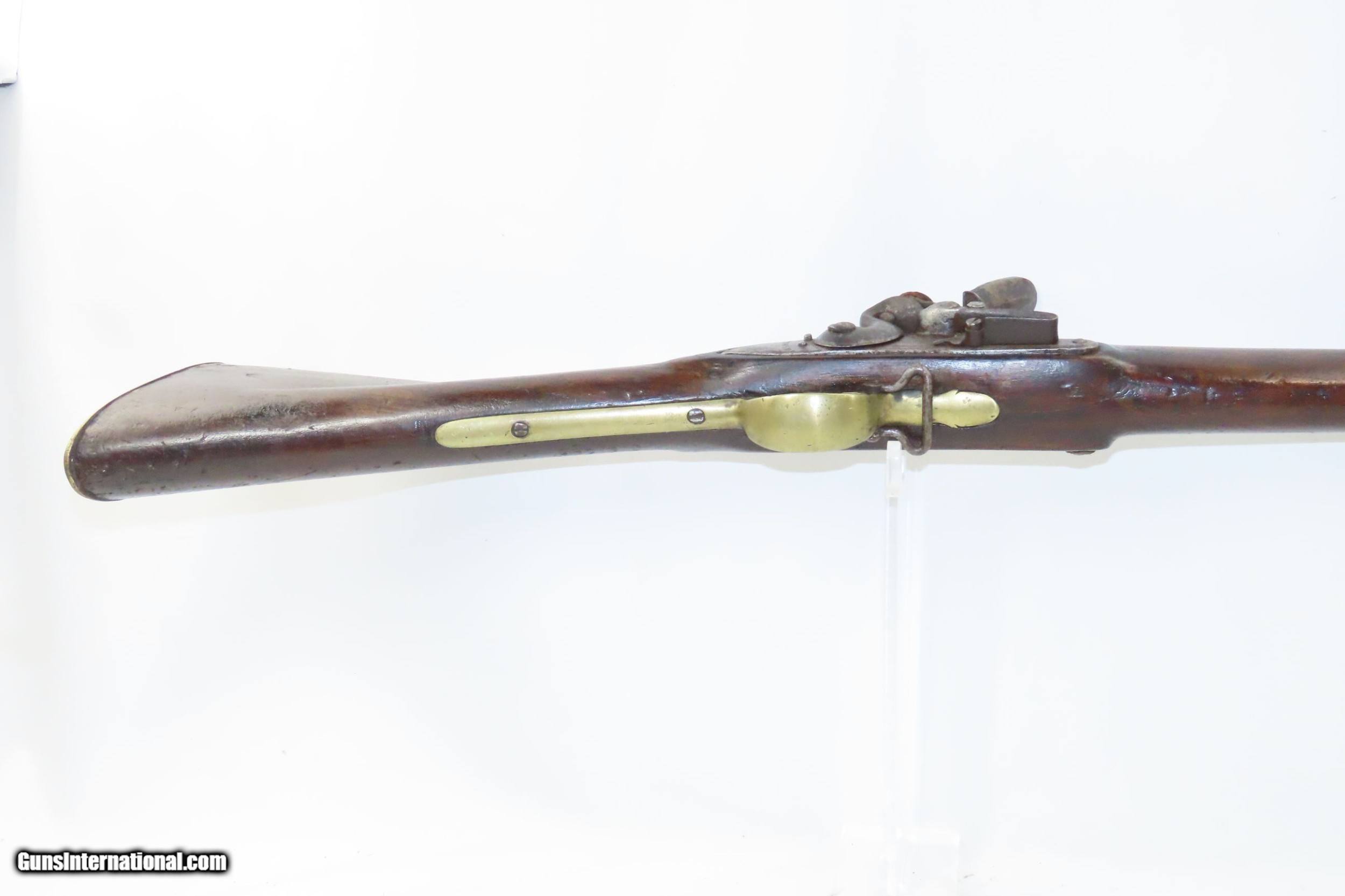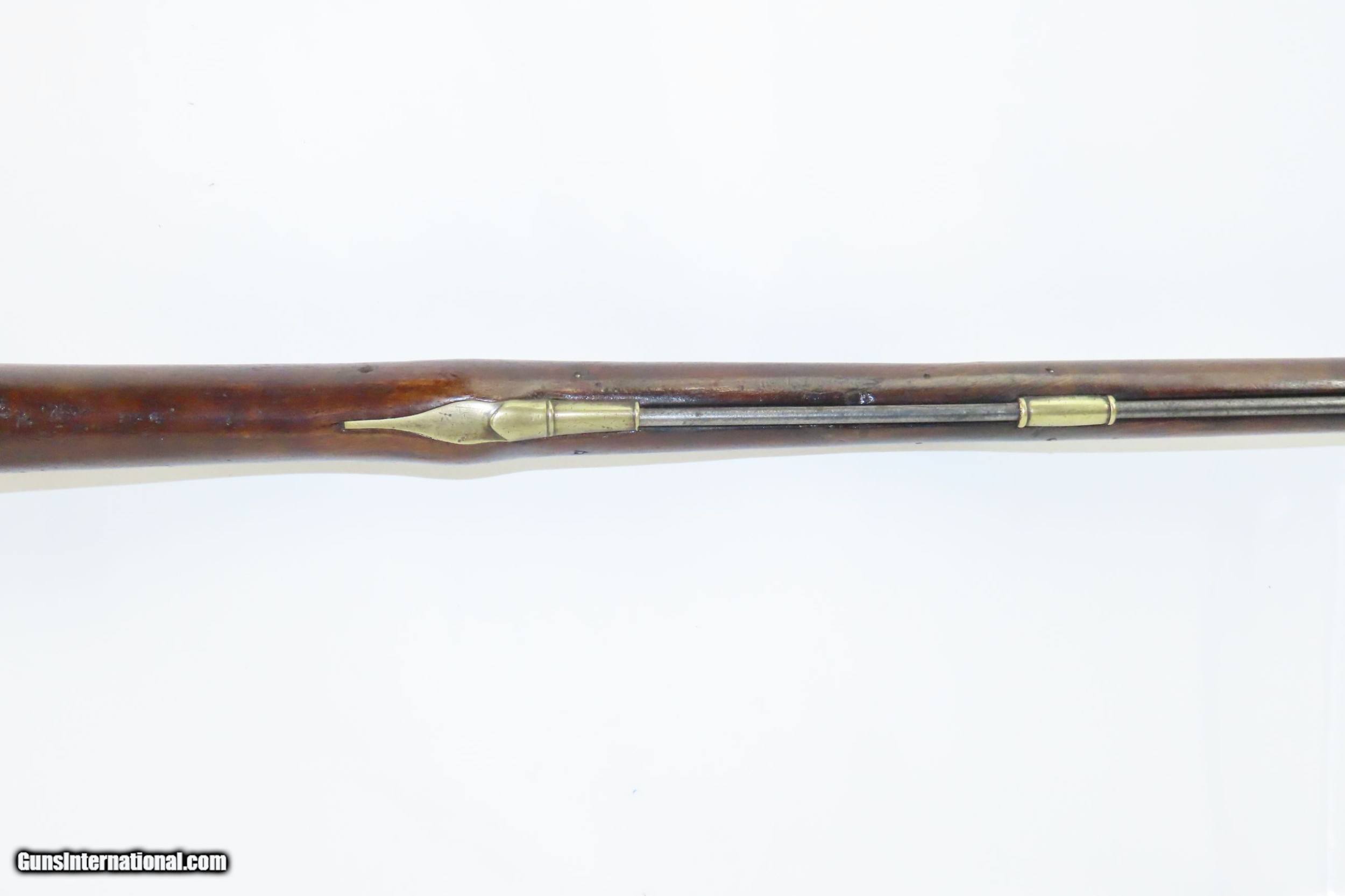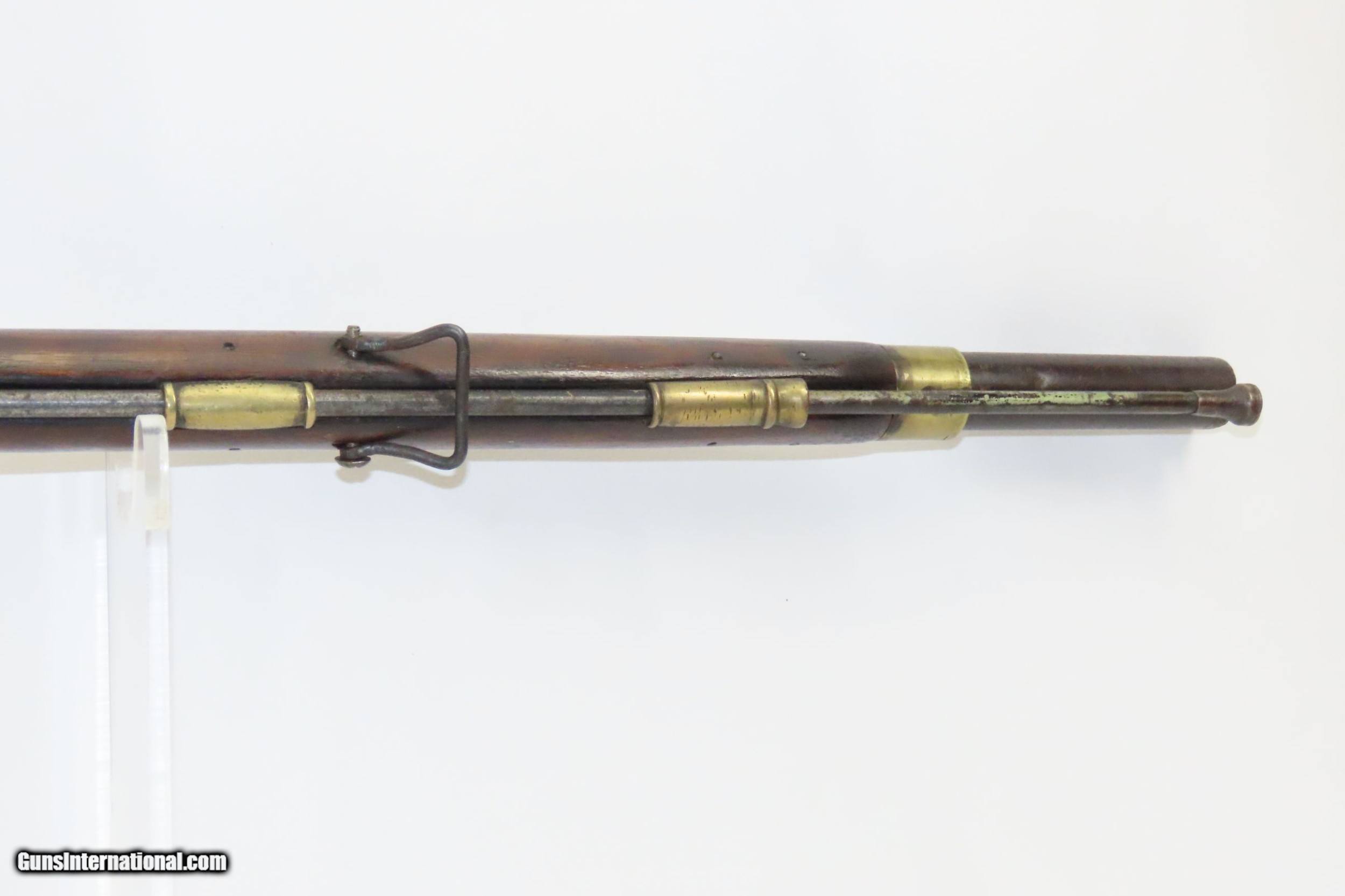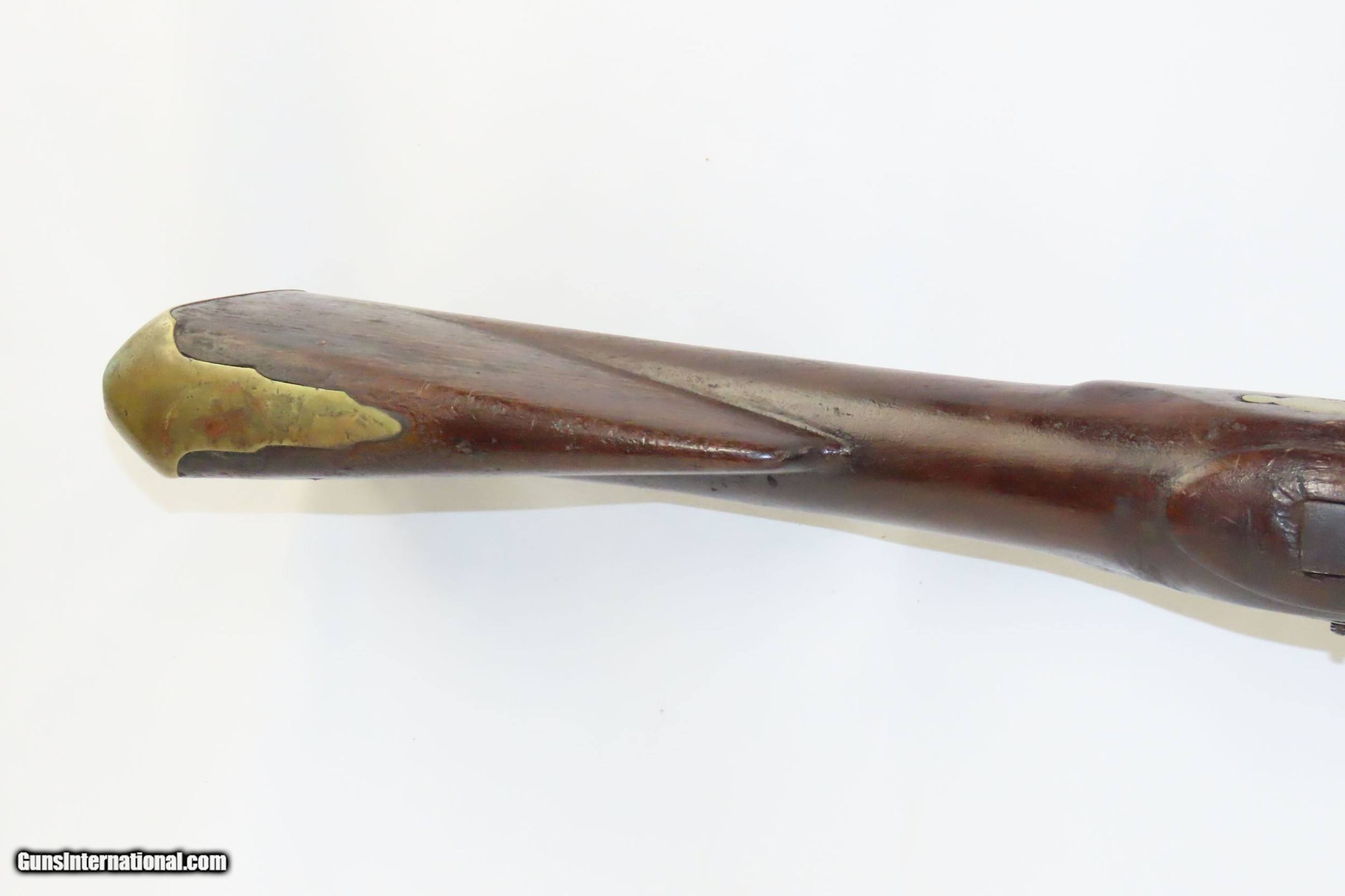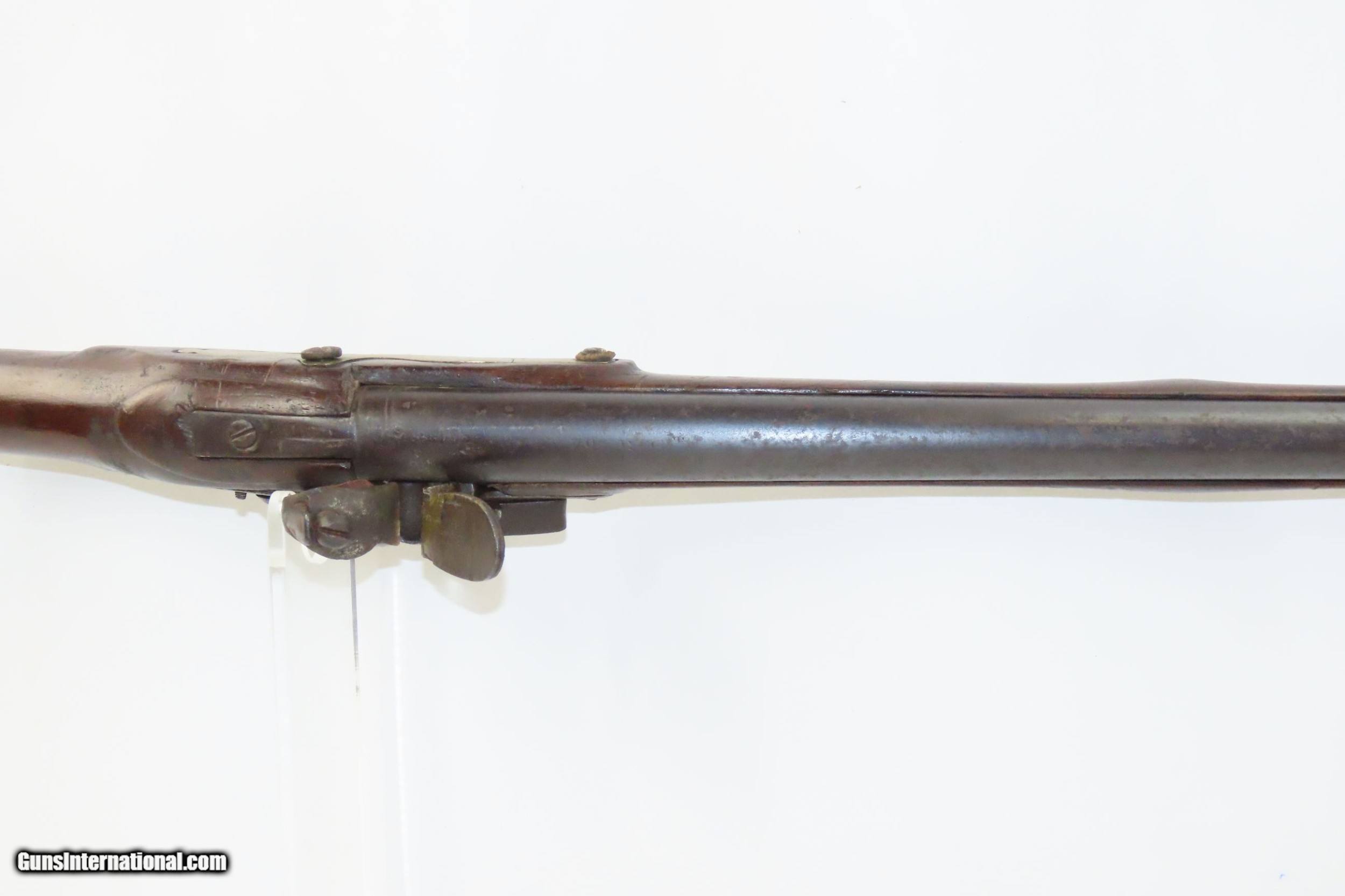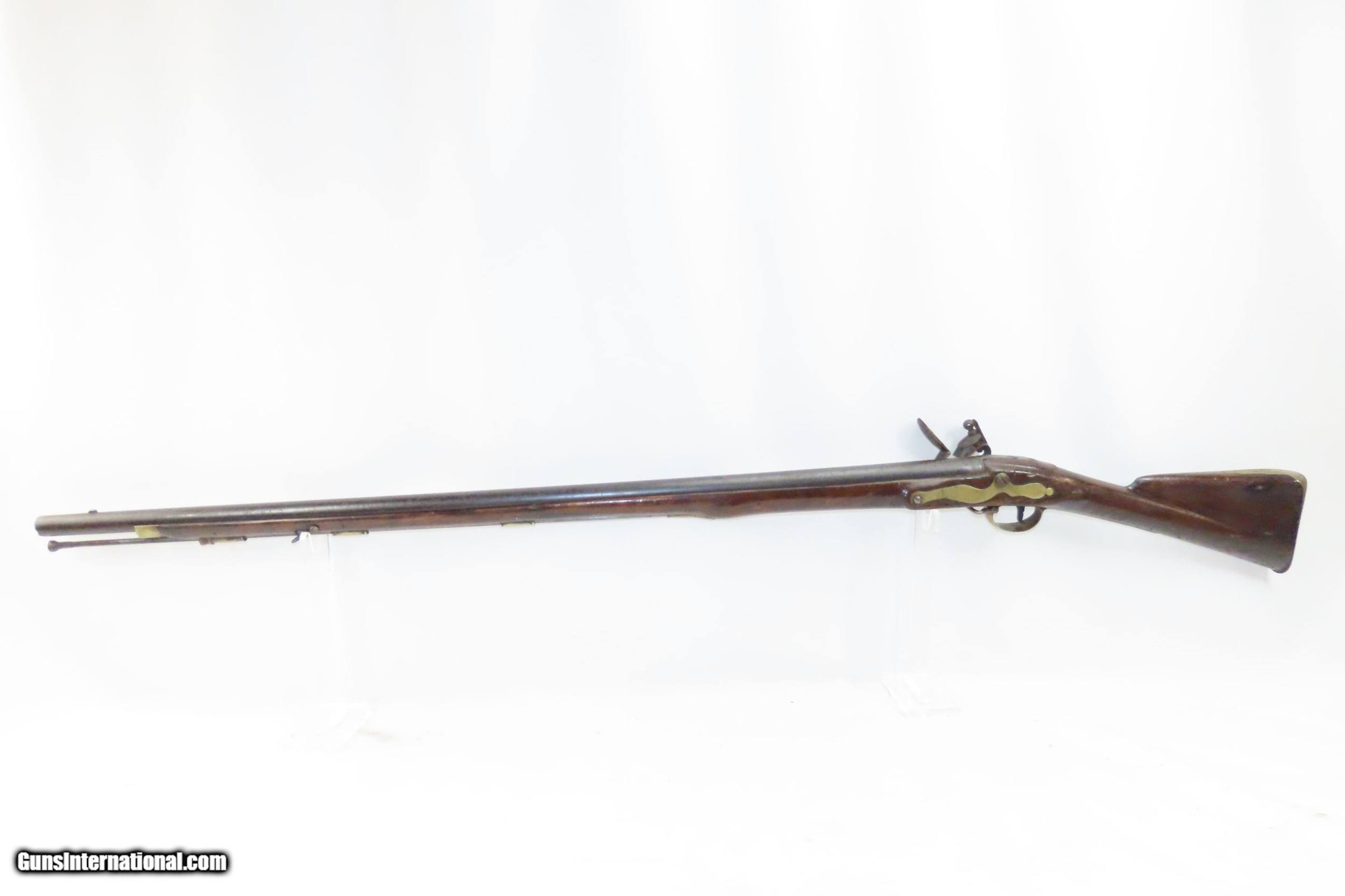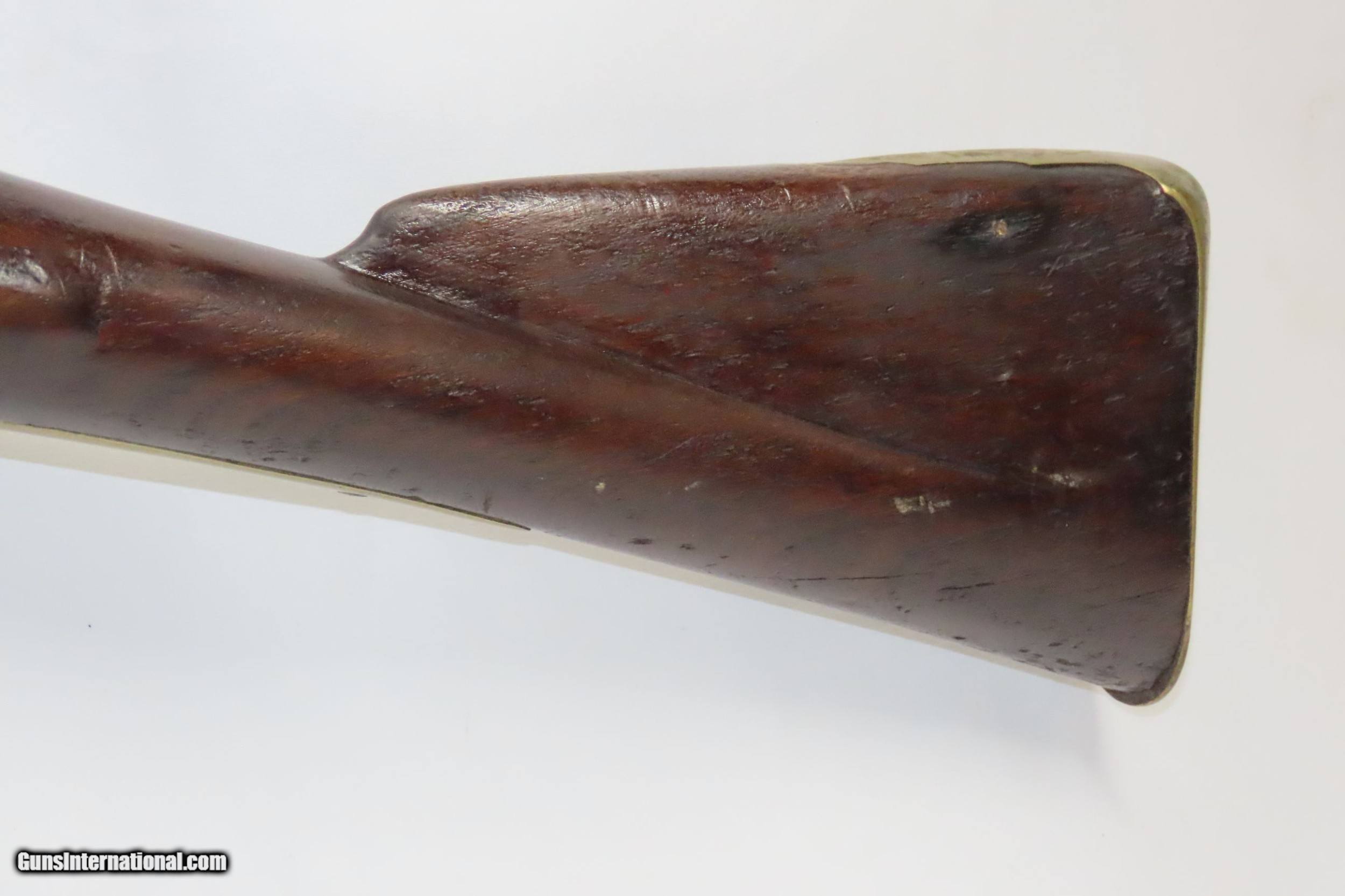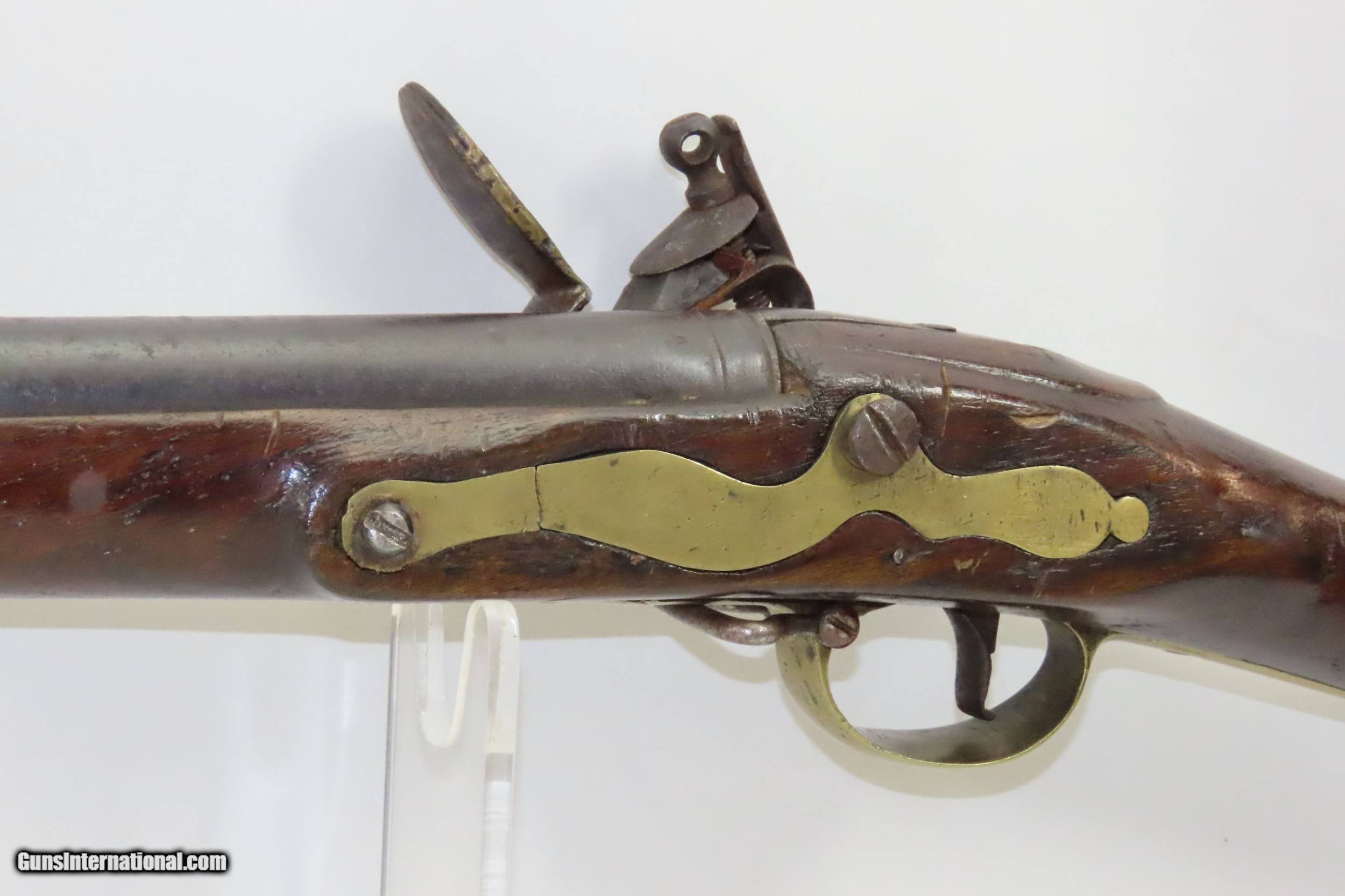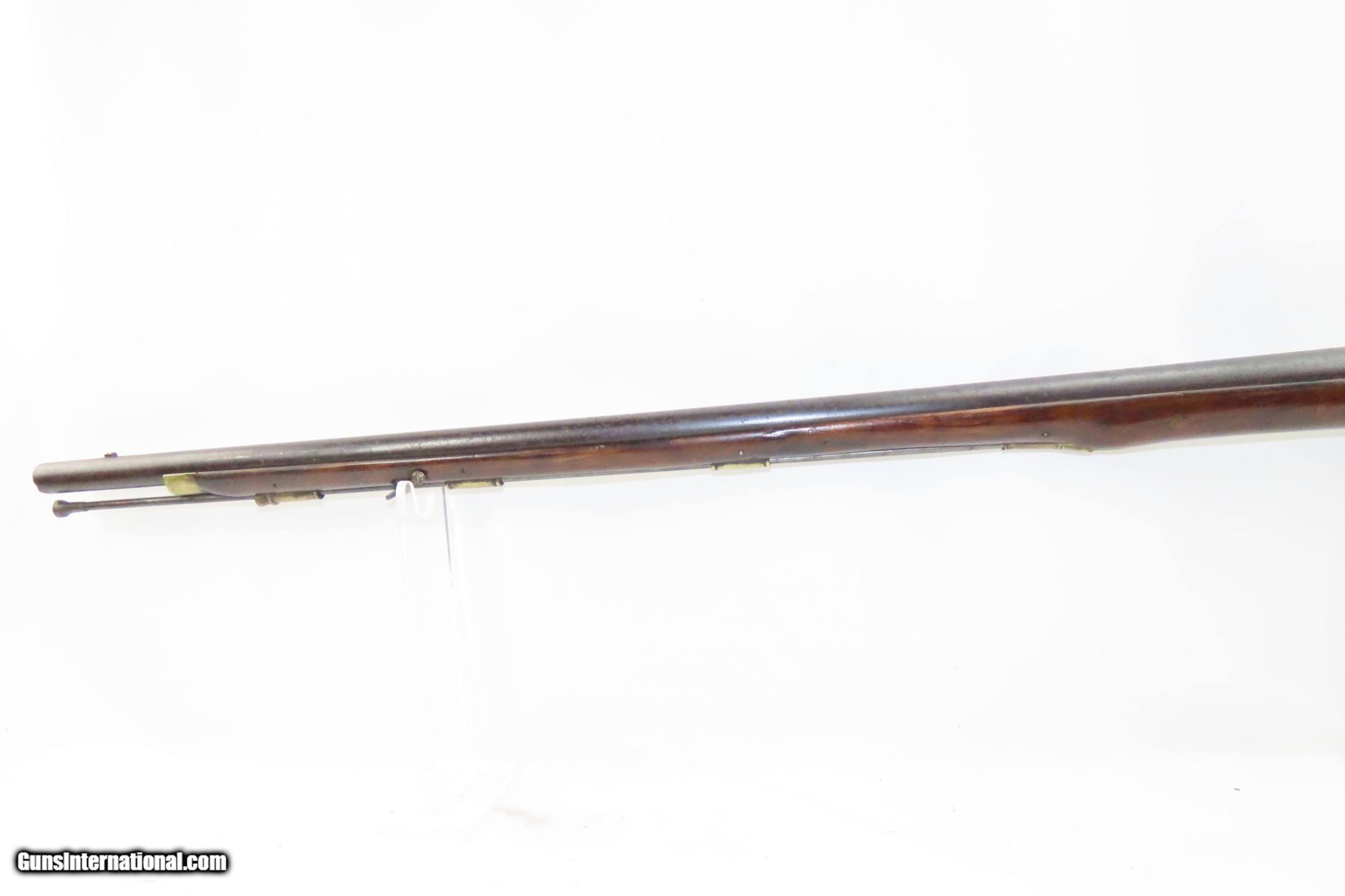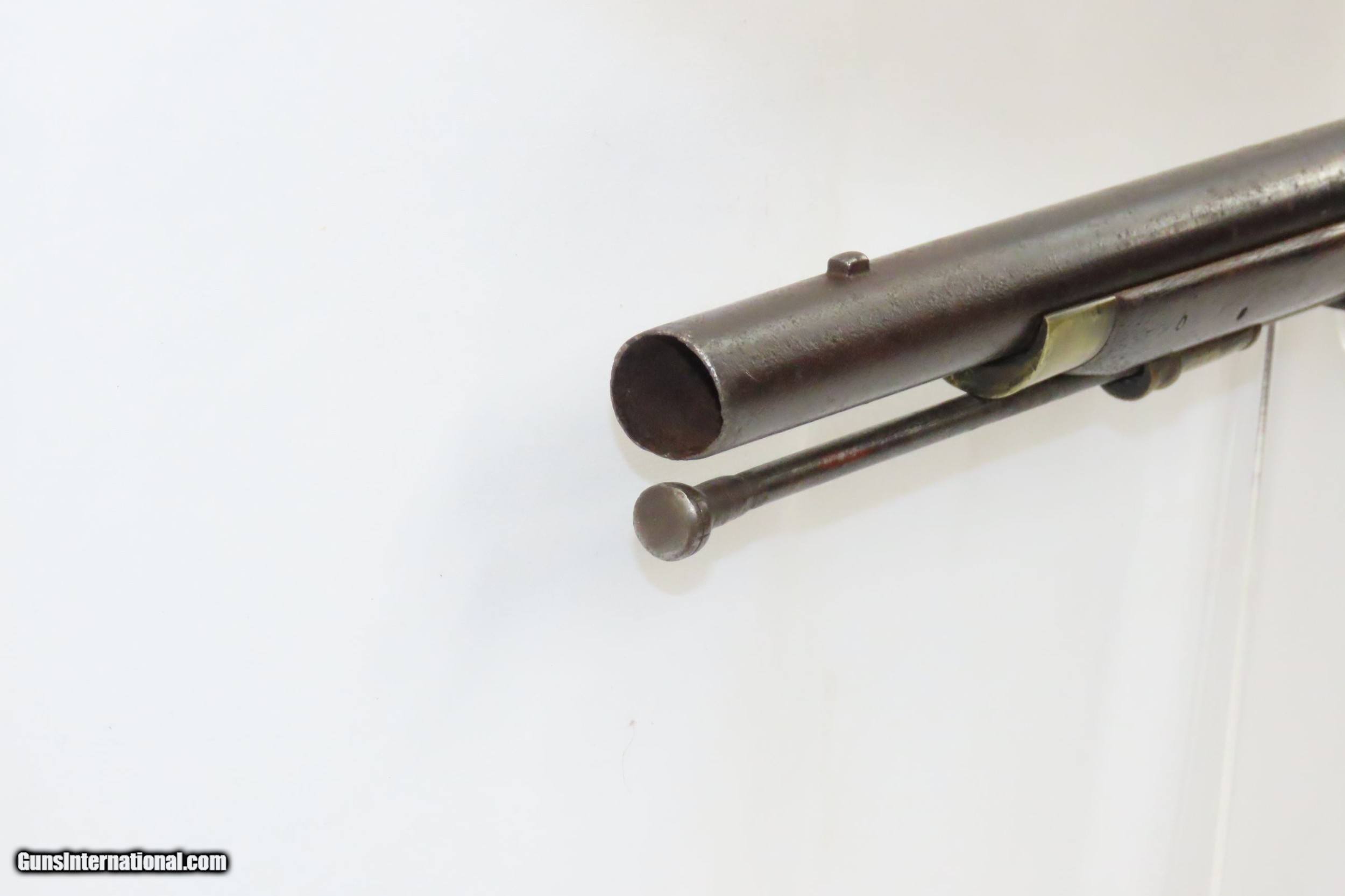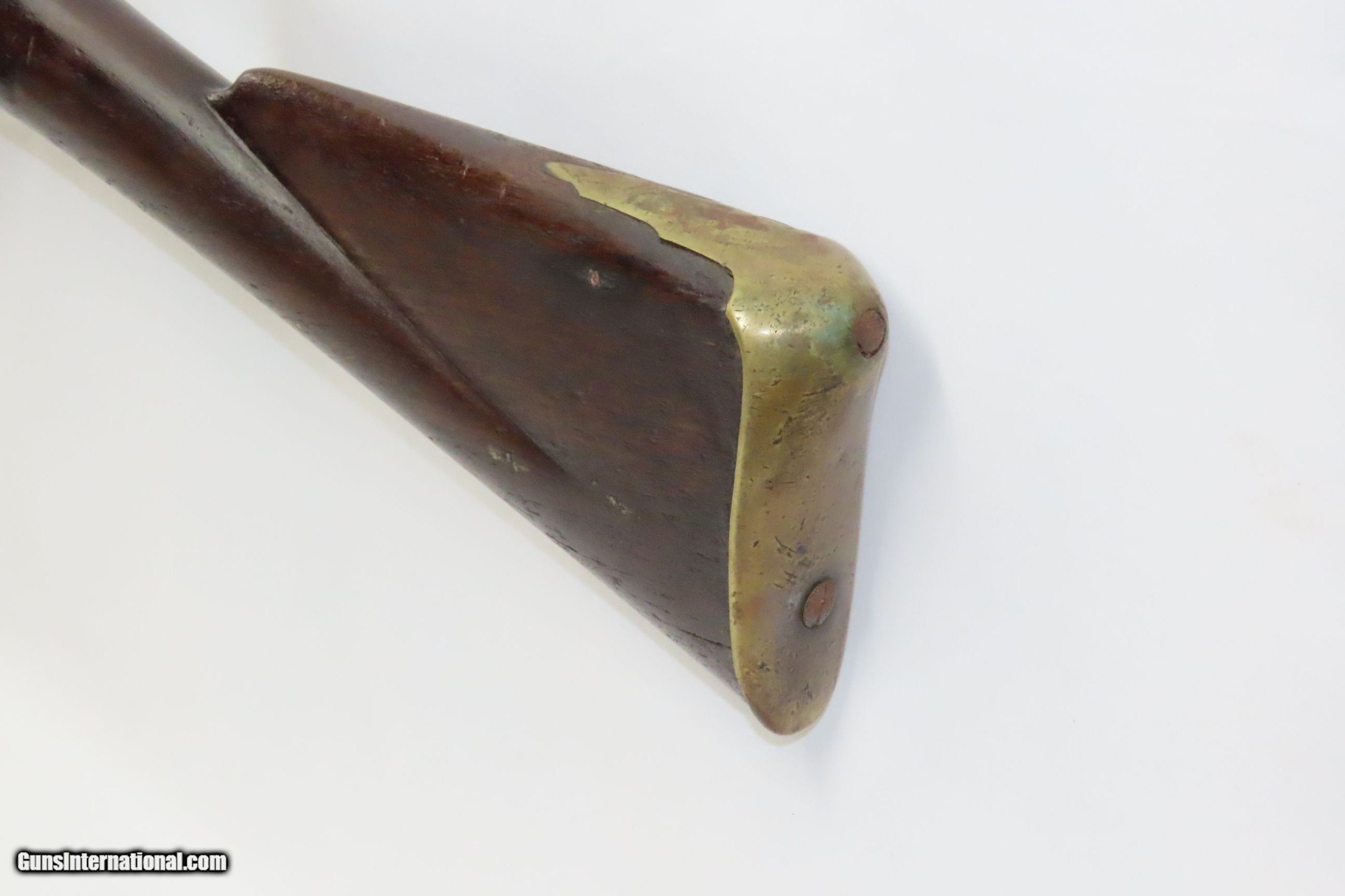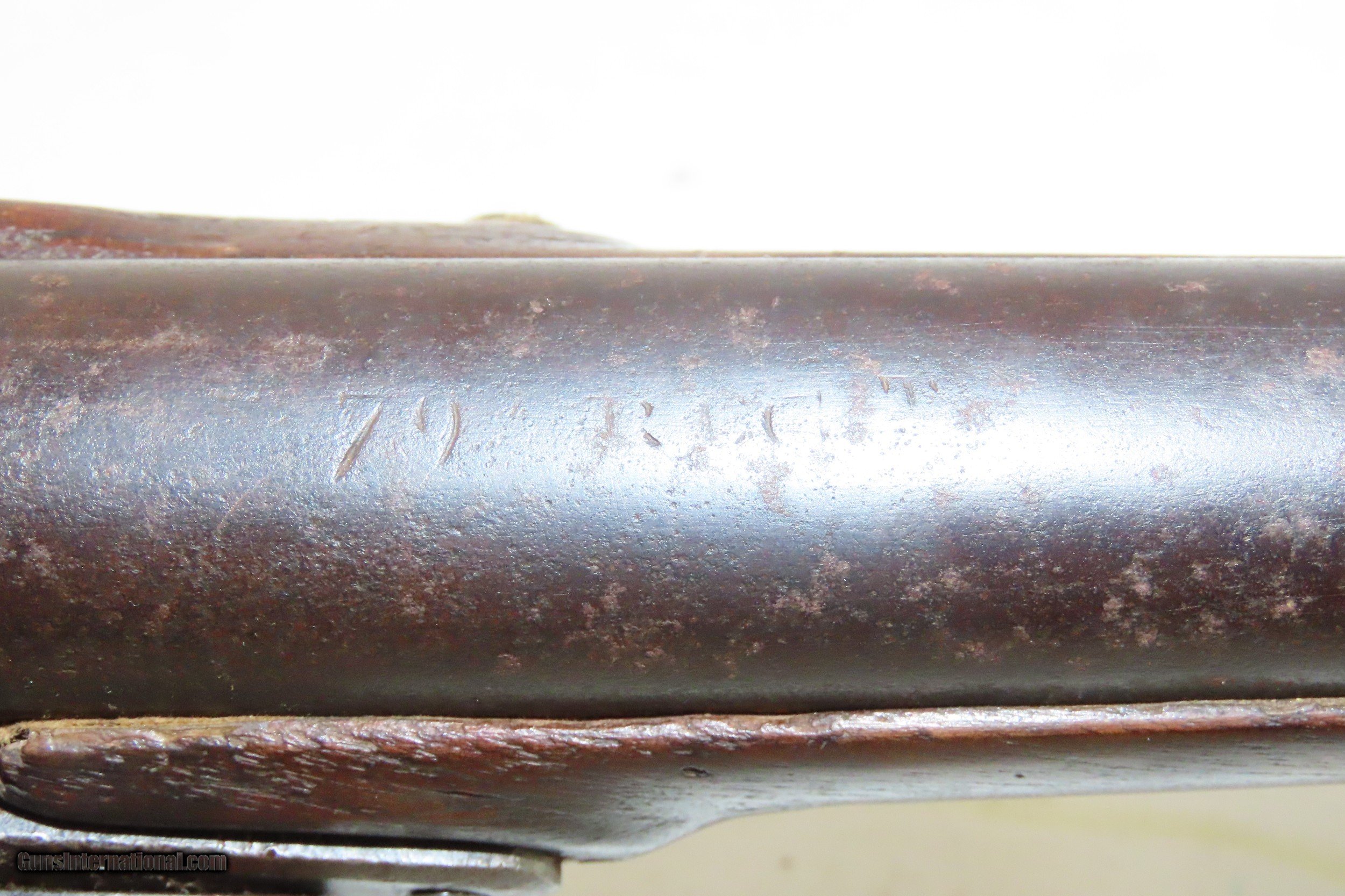Your Session is Ending
 The server has not detected any activity for the last 3 hours.
For your security, your session will expire in 2 minutes and you will be redirected to the Sign In page.
Would you like to stay signed in?
The server has not detected any activity for the last 3 hours.
For your security, your session will expire in 2 minutes and you will be redirected to the Sign In page.
Would you like to stay signed in?
79th REGIMENT Marked British Brown Bess FLINTLOCK Infantry Musket Antique French Revolutionary Wars & Napoleonic Wars for sale
79th REGIMENT Marked British Brown Bess FLINTLOCK Infantry Musket Antique French Revolutionary Wars & Napoleonic Wars for sale
Guns International #: 103403940
Seller's Inventory #: 215325
Category - Antique Rifles - 1500-1850
- Antique Rifles - Flintlock
79th REGIMENT Marked British Brown Bess FLINTLOCK Infantry Musket Antique
French Revolutionary Wars & Napoleonic Wars
Description:
79th REGIMENT Marked British Brown Bess FLINTLOCK Infantry Musket Antique
French Revolutionary Wars & Napoleonic Wars
Here we present an antique British Brown Bess Flintlock Musket with “79th REGT” markings on the top of the barrel, made circa the late-18th Century. This indicates the 79th Regiment of Foot, the Queen’s Own Cameron Highlanders, also known as the Cameron Highlanders or the Cameronian Vounteers. This regiment was raised in 1793 in the Scottish Highlands at Fort William from Clan Cameron from which the regiment gets its name.
This unit fought the French during the French Revolutionary Wars as well as the Napoleonic Wars. In 1794 the 79th was sent to Flanders and saw the end of the Flanders Campaign (April 1792- June 1795) under the Duke of York. After this the regiment was sent to the West Indies for a two-year stint. 1799 found the 79th fighting the French again at Alkmaar in the Netherlands during the War of the Second Coalition (1798-1802). 1800 saw the 79th fighting the Spanish in an effort to capture the naval base in Ferrol (during the Anglo-Spanish War that was a part of the Coalition Wars). March of 1801 found the regiment in Egypt at the Battle of Abukir where they defeated the French and forced a surrender, securing a major route to Indian trade.
In 1807, the 79th fought in the Battle of Copenhagen, and in 1808 was in Portugal for the Peninsular War. They were driven from the Peninsula by the French in January of 1809 at the Battle of Corunna. They were back in Portugal by January of 1810 and fought a series of battles: the Battle of Bussaco (September 1810), Battle of Fuentes de Oñoro (May 1811), Siege of Badajoz (March 1812), Battle of Salamanca (July 1812), Occupation of Madrid (August 1812), Siege of Burgos (September 1812), Battle of the Pyrenees (July 1813), Battle of Nivelle (November 1813), Battle of Nive (December 1813), and the Battle of Toulouse which was one of the final battle of the Napoleonic Wars where the 6th Coalition forces under the Duke of Wellington took the fighting to France (April 1814).
Napoleon would abdicate but return from exile for one final stand about a year later. Once again, the 79th would be there to fight the French forces, this time in Belgium. The regiment fought under the Duke of Wellington at the Battle of Quatre Bras (June 16) and at Waterloo (June 18) of 1815, suffering massive casualties in their efforts: 103 killed and 353 wounded in these two preeminent battles of the Napoleonic Wars. The 79th Regiment was mentioned in the Duke of Wellington’s famous Dispatch (his after-action report recounting how the French forces were defeated; written the day after the Battle of Waterloo), one of only 4 regiments specifically mentioned in the document:
We maintained our position also, and completely defeated and repulsed all the enemy's attempts to get possession of it. The enemy repeatedly attacked us with a large body of infantry and cavalry, supported by a numerous and powerful artillery. He made several charges with the cavalry upon our infantry, but all were repulsed in the steadiest manner.
In this affair, His Royal Highness the Prince of Orange, the Duke of Brunswick, and Lieut. General Sir Thomas Picton, and Major Generals Sir James Kempt and Sir Denis Pack, who were engaged from the commencement of the enemy's attack, highly distinguished themselves, as well as Lieut. General Charles Baron Alten, Major General Sir C. Halkett, Lieut. General Cooke, and Major Generals Maitland and Byng, as they successively arrived. The troops of the 5th division, and those of the Brunswick corps, were long and severely engaged, and conducted themselves with the utmost gallantry. I must particularly mention the 28th, 42nd, 79th, and 92nd regiments, and the battalion of Hanoverians.
This musket looks fitting for a musket that has been at the Battle of Waterloo. The exterior has a dark, weathered patina. There are Board of Ordnance stamps on the top of the barrel and a small spangled “W” on the left side of the breach end. There is a storekeeper’s marking on the left side of the butt stock. The lock plate bears a faint royal cipher and is “TOWER” marked on the tail of the lock. The frizzen was so worn that a new sheet of iron was brazed to the old face. The action will hold in the half-cocked position and even the full-cock position but is not quite functional any longer. The bore is smooth and dark and you can see the thinness of the muzzle area. The stock has been repaired around the lock area long ago and it blends nicely with the surrounding wood. A very well-used musket indeed, and a lovely piece of history that was used by the British during this epoch dominated by the French.
Own the original! This is a legitimate antique and not a reproduction.
Barrel is 39 7/8 inches.
Caliber: .75 Flintlock
Overall condition as seen in photos.
Very Fast. Very Safe. FREE SHIPPING WORLDWIDE. Delivered directly to your door by express mail!
Guaranteed AUTHENTIC & Includes CERTIFICATE OF AUTHENTICITY.
ancestryguns
$7245
#215325
Antique: Yes
Price: $7,245.00
Buy Now
Pay with
Description:
79th REGIMENT Marked British Brown Bess FLINTLOCK Infantry Musket Antique
French Revolutionary Wars & Napoleonic Wars
Here we present an antique British Brown Bess Flintlock Musket with “79th REGT” markings on the top of the barrel, made circa the late-18th Century. This indicates the 79th Regiment of Foot, the Queen’s Own Cameron Highlanders, also known as the Cameron Highlanders or the Cameronian Vounteers. This regiment was raised in 1793 in the Scottish Highlands at Fort William from Clan Cameron from which the regiment gets its name.
This unit fought the French during the French Revolutionary Wars as well as the Napoleonic Wars. In 1794 the 79th was sent to Flanders and saw the end of the Flanders Campaign (April 1792- June 1795) under the Duke of York. After this the regiment was sent to the West Indies for a two-year stint. 1799 found the 79th fighting the French again at Alkmaar in the Netherlands during the War of the Second Coalition (1798-1802). 1800 saw the 79th fighting the Spanish in an effort to capture the naval base in Ferrol (during the Anglo-Spanish War that was a part of the Coalition Wars). March of 1801 found the regiment in Egypt at the Battle of Abukir where they defeated the French and forced a surrender, securing a major route to Indian trade.
In 1807, the 79th fought in the Battle of Copenhagen, and in 1808 was in Portugal for the Peninsular War. They were driven from the Peninsula by the French in January of 1809 at the Battle of Corunna. They were back in Portugal by January of 1810 and fought a series of battles: the Battle of Bussaco (September 1810), Battle of Fuentes de Oñoro (May 1811), Siege of Badajoz (March 1812), Battle of Salamanca (July 1812), Occupation of Madrid (August 1812), Siege of Burgos (September 1812), Battle of the Pyrenees (July 1813), Battle of Nivelle (November 1813), Battle of Nive (December 1813), and the Battle of Toulouse which was one of the final battle of the Napoleonic Wars where the 6th Coalition forces under the Duke of Wellington took the fighting to France (April 1814).
Napoleon would abdicate but return from exile for one final stand about a year later. Once again, the 79th would be there to fight the French forces, this time in Belgium. The regiment fought under the Duke of Wellington at the Battle of Quatre Bras (June 16) and at Waterloo (June 18) of 1815, suffering massive casualties in their efforts: 103 killed and 353 wounded in these two preeminent battles of the Napoleonic Wars. The 79th Regiment was mentioned in the Duke of Wellington’s famous Dispatch (his after-action report recounting how the French forces were defeated; written the day after the Battle of Waterloo), one of only 4 regiments specifically mentioned in the document:
We maintained our position also, and completely defeated and repulsed all the enemy's attempts to get possession of it. The enemy repeatedly attacked us with a large body of infantry and cavalry, supported by a numerous and powerful artillery. He made several charges with the cavalry upon our infantry, but all were repulsed in the steadiest manner.
In this affair, His Royal Highness the Prince of Orange, the Duke of Brunswick, and Lieut. General Sir Thomas Picton, and Major Generals Sir James Kempt and Sir Denis Pack, who were engaged from the commencement of the enemy's attack, highly distinguished themselves, as well as Lieut. General Charles Baron Alten, Major General Sir C. Halkett, Lieut. General Cooke, and Major Generals Maitland and Byng, as they successively arrived. The troops of the 5th division, and those of the Brunswick corps, were long and severely engaged, and conducted themselves with the utmost gallantry. I must particularly mention the 28th, 42nd, 79th, and 92nd regiments, and the battalion of Hanoverians.
This musket looks fitting for a musket that has been at the Battle of Waterloo. The exterior has a dark, weathered patina. There are Board of Ordnance stamps on the top of the barrel and a small spangled “W” on the left side of the breach end. There is a storekeeper’s marking on the left side of the butt stock. The lock plate bears a faint royal cipher and is “TOWER” marked on the tail of the lock. The frizzen was so worn that a new sheet of iron was brazed to the old face. The action will hold in the half-cocked position and even the full-cock position but is not quite functional any longer. The bore is smooth and dark and you can see the thinness of the muzzle area. The stock has been repaired around the lock area long ago and it blends nicely with the surrounding wood. A very well-used musket indeed, and a lovely piece of history that was used by the British during this epoch dominated by the French.
Own the original! This is a legitimate antique and not a reproduction.
Barrel is 39 7/8 inches.
Caliber: .75 Flintlock
Overall condition as seen in photos.
Very Fast. Very Safe. FREE SHIPPING WORLDWIDE. Delivered directly to your door by express mail!
Guaranteed AUTHENTIC & Includes CERTIFICATE OF AUTHENTICITY.
ancestryguns
$7245
#215325
Antique: Yes
Price: $7,245.00
Buy Now
Pay with

Contact Seller
Click Photo to Enlarge
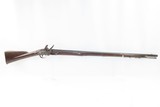
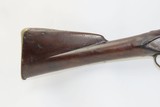
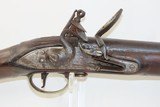
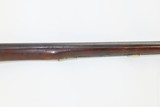
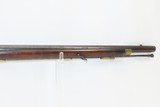
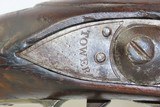
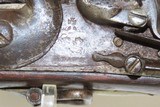

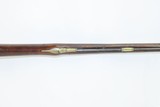
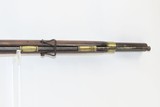
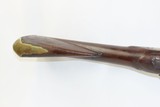

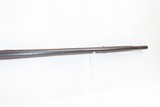
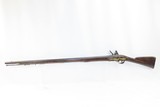
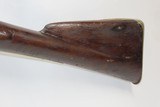

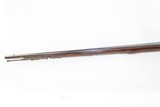
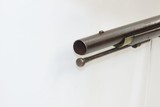
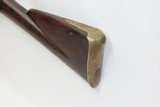
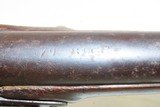
|
Guns International #: 103403940
Category - Antique Rifles - 1500-1850
- Antique Rifles - Flintlock
79th REGIMENT Marked British Brown Bess FLINTLOCK Infantry Musket Antique
French Revolutionary Wars & Napoleonic Wars
Description: 79th REGIMENT Marked British Brown Bess FLINTLOCK Infantry Musket Antique French Revolutionary Wars & Napoleonic Wars Here we present an antique British Brown Bess Flintlock Musket with “79th REGT” markings on the top of the barrel, made circa the late-18th Century. This indicates the 79th Regiment of Foot, the Queen’s Own Cameron Highlanders, also known as the Cameron Highlanders or the Cameronian Vounteers. This regiment was raised in 1793 in the Scottish Highlands at Fort William from Clan Cameron from which the regiment gets its name. This unit fought the French during the French Revolutionary Wars as well as the Napoleonic Wars. In 1794 the 79th was sent to Flanders and saw the end of the Flanders Campaign (April 1792- June 1795) under the Duke of York. After this the regiment was sent to the West Indies for a two-year stint. 1799 found the 79th fighting the French again at Alkmaar in the Netherlands during the War of the Second Coalition (1798-1802). 1800 saw the 79th fighting the Spanish in an effort to capture the naval base in Ferrol (during the Anglo-Spanish War that was a part of the Coalition Wars). March of 1801 found the regiment in Egypt at the Battle of Abukir where they defeated the French and forced a surrender, securing a major route to Indian trade. In 1807, the 79th fought in the Battle of Copenhagen, and in 1808 was in Portugal for the Peninsular War. They were driven from the Peninsula by the French in January of 1809 at the Battle of Corunna. They were back in Portugal by January of 1810 and fought a series of battles: the Battle of Bussaco (September 1810), Battle of Fuentes de Oñoro (May 1811), Siege of Badajoz (March 1812), Battle of Salamanca (July 1812), Occupation of Madrid (August 1812), Siege of Burgos (September 1812), Battle of the Pyrenees (July 1813), Battle of Nivelle (November 1813), Battle of Nive (December 1813), and the Battle of Toulouse which was one of the final battle of the Napoleonic Wars where the 6th Coalition forces under the Duke of Wellington took the fighting to France (April 1814). Napoleon would abdicate but return from exile for one final stand about a year later. Once again, the 79th would be there to fight the French forces, this time in Belgium. The regiment fought under the Duke of Wellington at the Battle of Quatre Bras (June 16) and at Waterloo (June 18) of 1815, suffering massive casualties in their efforts: 103 killed and 353 wounded in these two preeminent battles of the Napoleonic Wars. The 79th Regiment was mentioned in the Duke of Wellington’s famous Dispatch (his after-action report recounting how the French forces were defeated; written the day after the Battle of Waterloo), one of only 4 regiments specifically mentioned in the document: We maintained our position also, and completely defeated and repulsed all the enemy's attempts to get possession of it. The enemy repeatedly attacked us with a large body of infantry and cavalry, supported by a numerous and powerful artillery. He made several charges with the cavalry upon our infantry, but all were repulsed in the steadiest manner. In this affair, His Royal Highness the Prince of Orange, the Duke of Brunswick, and Lieut. General Sir Thomas Picton, and Major Generals Sir James Kempt and Sir Denis Pack, who were engaged from the commencement of the enemy's attack, highly distinguished themselves, as well as Lieut. General Charles Baron Alten, Major General Sir C. Halkett, Lieut. General Cooke, and Major Generals Maitland and Byng, as they successively arrived. The troops of the 5th division, and those of the Brunswick corps, were long and severely engaged, and conducted themselves with the utmost gallantry. I must particularly mention the 28th, 42nd, 79th, and 92nd regiments, and the battalion of Hanoverians. This musket looks fitting for a musket that has been at the Battle of Waterloo. The exterior has a dark, weathered patina. There are Board of Ordnance stamps on the top of the barrel and a small spangled “W” on the left side of the breach end. There is a storekeeper’s marking on the left side of the butt stock. The lock plate bears a faint royal cipher and is “TOWER” marked on the tail of the lock. The frizzen was so worn that a new sheet of iron was brazed to the old face. The action will hold in the half-cocked position and even the full-cock position but is not quite functional any longer. The bore is smooth and dark and you can see the thinness of the muzzle area. The stock has been repaired around the lock area long ago and it blends nicely with the surrounding wood. A very well-used musket indeed, and a lovely piece of history that was used by the British during this epoch dominated by the French. Own the original! This is a legitimate antique and not a reproduction. Barrel is 39 7/8 inches. Caliber: .75 Flintlock Overall condition as seen in photos. Very Fast. Very Safe. FREE SHIPPING WORLDWIDE. Delivered directly to your door by express mail! Guaranteed AUTHENTIC & Includes CERTIFICATE OF AUTHENTICITY. ancestryguns $7245 #215325 Antique: Yes Price: $7,245.00 Buy Now Pay with 
Contact Seller |
Guns International #: 103403940
Seller's Inventory #: 215325
Category - Antique Rifles - 1500-1850
- Antique Rifles - Flintlock
79th REGIMENT Marked British Brown Bess FLINTLOCK Infantry Musket Antique
French Revolutionary Wars & Napoleonic Wars
Description:
79th REGIMENT Marked British Brown Bess FLINTLOCK Infantry Musket Antique
French Revolutionary Wars & Napoleonic Wars
Here we present an antique British Brown Bess Flintlock Musket with “79th REGT” markings on the top of the barrel, made circa the late-18th Century. This indicates the 79th Regiment of Foot, the Queen’s Own Cameron Highlanders, also known as the Cameron Highlanders or the Cameronian Vounteers. This regiment was raised in 1793 in the Scottish Highlands at Fort William from Clan Cameron from which the regiment gets its name.
This unit fought the French during the French Revolutionary Wars as well as the Napoleonic Wars. In 1794 the 79th was sent to Flanders and saw the end of the Flanders Campaign (April 1792- June 1795) under the Duke of York. After this the regiment was sent to the West Indies for a two-year stint. 1799 found the 79th fighting the French again at Alkmaar in the Netherlands during the War of the Second Coalition (1798-1802). 1800 saw the 79th fighting the Spanish in an effort to capture the naval base in Ferrol (during the Anglo-Spanish War that was a part of the Coalition Wars). March of 1801 found the regiment in Egypt at the Battle of Abukir where they defeated the French and forced a surrender, securing a major route to Indian trade.
In 1807, the 79th fought in the Battle of Copenhagen, and in 1808 was in Portugal for the Peninsular War. They were driven from the Peninsula by the French in January of 1809 at the Battle of Corunna. They were back in Portugal by January of 1810 and fought a series of battles: the Battle of Bussaco (September 1810), Battle of Fuentes de Oñoro (May 1811), Siege of Badajoz (March 1812), Battle of Salamanca (July 1812), Occupation of Madrid (August 1812), Siege of Burgos (September 1812), Battle of the Pyrenees (July 1813), Battle of Nivelle (November 1813), Battle of Nive (December 1813), and the Battle of Toulouse which was one of the final battle of the Napoleonic Wars where the 6th Coalition forces under the Duke of Wellington took the fighting to France (April 1814).
Napoleon would abdicate but return from exile for one final stand about a year later. Once again, the 79th would be there to fight the French forces, this time in Belgium. The regiment fought under the Duke of Wellington at the Battle of Quatre Bras (June 16) and at Waterloo (June 18) of 1815, suffering massive casualties in their efforts: 103 killed and 353 wounded in these two preeminent battles of the Napoleonic Wars. The 79th Regiment was mentioned in the Duke of Wellington’s famous Dispatch (his after-action report recounting how the French forces were defeated; written the day after the Battle of Waterloo), one of only 4 regiments specifically mentioned in the document:
We maintained our position also, and completely defeated and repulsed all the enemy's attempts to get possession of it. The enemy repeatedly attacked us with a large body of infantry and cavalry, supported by a numerous and powerful artillery. He made several charges with the cavalry upon our infantry, but all were repulsed in the steadiest manner.
In this affair, His Royal Highness the Prince of Orange, the Duke of Brunswick, and Lieut. General Sir Thomas Picton, and Major Generals Sir James Kempt and Sir Denis Pack, who were engaged from the commencement of the enemy's attack, highly distinguished themselves, as well as Lieut. General Charles Baron Alten, Major General Sir C. Halkett, Lieut. General Cooke, and Major Generals Maitland and Byng, as they successively arrived. The troops of the 5th division, and those of the Brunswick corps, were long and severely engaged, and conducted themselves with the utmost gallantry. I must particularly mention the 28th, 42nd, 79th, and 92nd regiments, and the battalion of Hanoverians.
This musket looks fitting for a musket that has been at the Battle of Waterloo. The exterior has a dark, weathered patina. There are Board of Ordnance stamps on the top of the barrel and a small spangled “W” on the left side of the breach end. There is a storekeeper’s marking on the left side of the butt stock. The lock plate bears a faint royal cipher and is “TOWER” marked on the tail of the lock. The frizzen was so worn that a new sheet of iron was brazed to the old face. The action will hold in the half-cocked position and even the full-cock position but is not quite functional any longer. The bore is smooth and dark and you can see the thinness of the muzzle area. The stock has been repaired around the lock area long ago and it blends nicely with the surrounding wood. A very well-used musket indeed, and a lovely piece of history that was used by the British during this epoch dominated by the French.
Own the original! This is a legitimate antique and not a reproduction.
Barrel is 39 7/8 inches.
Caliber: .75 Flintlock
Overall condition as seen in photos.
Very Fast. Very Safe. FREE SHIPPING WORLDWIDE. Delivered directly to your door by express mail!
Guaranteed AUTHENTIC & Includes CERTIFICATE OF AUTHENTICITY.
ancestryguns
$7245
#215325
Antique: Yes
Price: $7,245.00
Buy Now
Pay with
Description:
79th REGIMENT Marked British Brown Bess FLINTLOCK Infantry Musket Antique
French Revolutionary Wars & Napoleonic Wars
Here we present an antique British Brown Bess Flintlock Musket with “79th REGT” markings on the top of the barrel, made circa the late-18th Century. This indicates the 79th Regiment of Foot, the Queen’s Own Cameron Highlanders, also known as the Cameron Highlanders or the Cameronian Vounteers. This regiment was raised in 1793 in the Scottish Highlands at Fort William from Clan Cameron from which the regiment gets its name.
This unit fought the French during the French Revolutionary Wars as well as the Napoleonic Wars. In 1794 the 79th was sent to Flanders and saw the end of the Flanders Campaign (April 1792- June 1795) under the Duke of York. After this the regiment was sent to the West Indies for a two-year stint. 1799 found the 79th fighting the French again at Alkmaar in the Netherlands during the War of the Second Coalition (1798-1802). 1800 saw the 79th fighting the Spanish in an effort to capture the naval base in Ferrol (during the Anglo-Spanish War that was a part of the Coalition Wars). March of 1801 found the regiment in Egypt at the Battle of Abukir where they defeated the French and forced a surrender, securing a major route to Indian trade.
In 1807, the 79th fought in the Battle of Copenhagen, and in 1808 was in Portugal for the Peninsular War. They were driven from the Peninsula by the French in January of 1809 at the Battle of Corunna. They were back in Portugal by January of 1810 and fought a series of battles: the Battle of Bussaco (September 1810), Battle of Fuentes de Oñoro (May 1811), Siege of Badajoz (March 1812), Battle of Salamanca (July 1812), Occupation of Madrid (August 1812), Siege of Burgos (September 1812), Battle of the Pyrenees (July 1813), Battle of Nivelle (November 1813), Battle of Nive (December 1813), and the Battle of Toulouse which was one of the final battle of the Napoleonic Wars where the 6th Coalition forces under the Duke of Wellington took the fighting to France (April 1814).
Napoleon would abdicate but return from exile for one final stand about a year later. Once again, the 79th would be there to fight the French forces, this time in Belgium. The regiment fought under the Duke of Wellington at the Battle of Quatre Bras (June 16) and at Waterloo (June 18) of 1815, suffering massive casualties in their efforts: 103 killed and 353 wounded in these two preeminent battles of the Napoleonic Wars. The 79th Regiment was mentioned in the Duke of Wellington’s famous Dispatch (his after-action report recounting how the French forces were defeated; written the day after the Battle of Waterloo), one of only 4 regiments specifically mentioned in the document:
We maintained our position also, and completely defeated and repulsed all the enemy's attempts to get possession of it. The enemy repeatedly attacked us with a large body of infantry and cavalry, supported by a numerous and powerful artillery. He made several charges with the cavalry upon our infantry, but all were repulsed in the steadiest manner.
In this affair, His Royal Highness the Prince of Orange, the Duke of Brunswick, and Lieut. General Sir Thomas Picton, and Major Generals Sir James Kempt and Sir Denis Pack, who were engaged from the commencement of the enemy's attack, highly distinguished themselves, as well as Lieut. General Charles Baron Alten, Major General Sir C. Halkett, Lieut. General Cooke, and Major Generals Maitland and Byng, as they successively arrived. The troops of the 5th division, and those of the Brunswick corps, were long and severely engaged, and conducted themselves with the utmost gallantry. I must particularly mention the 28th, 42nd, 79th, and 92nd regiments, and the battalion of Hanoverians.
This musket looks fitting for a musket that has been at the Battle of Waterloo. The exterior has a dark, weathered patina. There are Board of Ordnance stamps on the top of the barrel and a small spangled “W” on the left side of the breach end. There is a storekeeper’s marking on the left side of the butt stock. The lock plate bears a faint royal cipher and is “TOWER” marked on the tail of the lock. The frizzen was so worn that a new sheet of iron was brazed to the old face. The action will hold in the half-cocked position and even the full-cock position but is not quite functional any longer. The bore is smooth and dark and you can see the thinness of the muzzle area. The stock has been repaired around the lock area long ago and it blends nicely with the surrounding wood. A very well-used musket indeed, and a lovely piece of history that was used by the British during this epoch dominated by the French.
Own the original! This is a legitimate antique and not a reproduction.
Barrel is 39 7/8 inches.
Caliber: .75 Flintlock
Overall condition as seen in photos.
Very Fast. Very Safe. FREE SHIPPING WORLDWIDE. Delivered directly to your door by express mail!
Guaranteed AUTHENTIC & Includes CERTIFICATE OF AUTHENTICITY.
ancestryguns
$7245
#215325
Antique: Yes
Price: $7,245.00
Buy Now
Pay with

Guns International #: 103403940
Seller's Inventory #: 215325


Guns International #: 103403940
Seller's Inventory #: 215325
Category - Antique Rifles - 1500-1850
- Antique Rifles - Flintlock
79th REGIMENT Marked British Brown Bess FLINTLOCK Infantry Musket Antique
French Revolutionary Wars & Napoleonic Wars
Description:
79th REGIMENT Marked British Brown Bess FLINTLOCK Infantry Musket Antique
French Revolutionary Wars & Napoleonic Wars
Here we present an antique British Brown Bess Flintlock Musket with “79th REGT” markings on the top of the barrel, made circa the late-18th Century. This indicates the 79th Regiment of Foot, the Queen’s Own Cameron Highlanders, also known as the Cameron Highlanders or the Cameronian Vounteers. This regiment was raised in 1793 in the Scottish Highlands at Fort William from Clan Cameron from which the regiment gets its name.
This unit fought the French during the French Revolutionary Wars as well as the Napoleonic Wars. In 1794 the 79th was sent to Flanders and saw the end of the Flanders Campaign (April 1792- June 1795) under the Duke of York. After this the regiment was sent to the West Indies for a two-year stint. 1799 found the 79th fighting the French again at Alkmaar in the Netherlands during the War of the Second Coalition (1798-1802). 1800 saw the 79th fighting the Spanish in an effort to capture the naval base in Ferrol (during the Anglo-Spanish War that was a part of the Coalition Wars). March of 1801 found the regiment in Egypt at the Battle of Abukir where they defeated the French and forced a surrender, securing a major route to Indian trade.
In 1807, the 79th fought in the Battle of Copenhagen, and in 1808 was in Portugal for the Peninsular War. They were driven from the Peninsula by the French in January of 1809 at the Battle of Corunna. They were back in Portugal by January of 1810 and fought a series of battles: the Battle of Bussaco (September 1810), Battle of Fuentes de Oñoro (May 1811), Siege of Badajoz (March 1812), Battle of Salamanca (July 1812), Occupation of Madrid (August 1812), Siege of Burgos (September 1812), Battle of the Pyrenees (July 1813), Battle of Nivelle (November 1813), Battle of Nive (December 1813), and the Battle of Toulouse which was one of the final battle of the Napoleonic Wars where the 6th Coalition forces under the Duke of Wellington took the fighting to France (April 1814).
Napoleon would abdicate but return from exile for one final stand about a year later. Once again, the 79th would be there to fight the French forces, this time in Belgium. The regiment fought under the Duke of Wellington at the Battle of Quatre Bras (June 16) and at Waterloo (June 18) of 1815, suffering massive casualties in their efforts: 103 killed and 353 wounded in these two preeminent battles of the Napoleonic Wars. The 79th Regiment was mentioned in the Duke of Wellington’s famous Dispatch (his after-action report recounting how the French forces were defeated; written the day after the Battle of Waterloo), one of only 4 regiments specifically mentioned in the document:
We maintained our position also, and completely defeated and repulsed all the enemy's attempts to get possession of it. The enemy repeatedly attacked us with a large body of infantry and cavalry, supported by a numerous and powerful artillery. He made several charges with the cavalry upon our infantry, but all were repulsed in the steadiest manner.
In this affair, His Royal Highness the Prince of Orange, the Duke of Brunswick, and Lieut. General Sir Thomas Picton, and Major Generals Sir James Kempt and Sir Denis Pack, who were engaged from the commencement of the enemy's attack, highly distinguished themselves, as well as Lieut. General Charles Baron Alten, Major General Sir C. Halkett, Lieut. General Cooke, and Major Generals Maitland and Byng, as they successively arrived. The troops of the 5th division, and those of the Brunswick corps, were long and severely engaged, and conducted themselves with the utmost gallantry. I must particularly mention the 28th, 42nd, 79th, and 92nd regiments, and the battalion of Hanoverians.
This musket looks fitting for a musket that has been at the Battle of Waterloo. The exterior has a dark, weathered patina. There are Board of Ordnance stamps on the top of the barrel and a small spangled “W” on the left side of the breach end. There is a storekeeper’s marking on the left side of the butt stock. The lock plate bears a faint royal cipher and is “TOWER” marked on the tail of the lock. The frizzen was so worn that a new sheet of iron was brazed to the old face. The action will hold in the half-cocked position and even the full-cock position but is not quite functional any longer. The bore is smooth and dark and you can see the thinness of the muzzle area. The stock has been repaired around the lock area long ago and it blends nicely with the surrounding wood. A very well-used musket indeed, and a lovely piece of history that was used by the British during this epoch dominated by the French.
Own the original! This is a legitimate antique and not a reproduction.
Barrel is 39 7/8 inches.
Caliber: .75 Flintlock
Overall condition as seen in photos.
Very Fast. Very Safe. FREE SHIPPING WORLDWIDE. Delivered directly to your door by express mail!
Guaranteed AUTHENTIC & Includes CERTIFICATE OF AUTHENTICITY.
ancestryguns
$7245
#215325
Antique: Yes
Price: $7,245.00
Buy Now
Pay with
Description:
79th REGIMENT Marked British Brown Bess FLINTLOCK Infantry Musket Antique
French Revolutionary Wars & Napoleonic Wars
Here we present an antique British Brown Bess Flintlock Musket with “79th REGT” markings on the top of the barrel, made circa the late-18th Century. This indicates the 79th Regiment of Foot, the Queen’s Own Cameron Highlanders, also known as the Cameron Highlanders or the Cameronian Vounteers. This regiment was raised in 1793 in the Scottish Highlands at Fort William from Clan Cameron from which the regiment gets its name.
This unit fought the French during the French Revolutionary Wars as well as the Napoleonic Wars. In 1794 the 79th was sent to Flanders and saw the end of the Flanders Campaign (April 1792- June 1795) under the Duke of York. After this the regiment was sent to the West Indies for a two-year stint. 1799 found the 79th fighting the French again at Alkmaar in the Netherlands during the War of the Second Coalition (1798-1802). 1800 saw the 79th fighting the Spanish in an effort to capture the naval base in Ferrol (during the Anglo-Spanish War that was a part of the Coalition Wars). March of 1801 found the regiment in Egypt at the Battle of Abukir where they defeated the French and forced a surrender, securing a major route to Indian trade.
In 1807, the 79th fought in the Battle of Copenhagen, and in 1808 was in Portugal for the Peninsular War. They were driven from the Peninsula by the French in January of 1809 at the Battle of Corunna. They were back in Portugal by January of 1810 and fought a series of battles: the Battle of Bussaco (September 1810), Battle of Fuentes de Oñoro (May 1811), Siege of Badajoz (March 1812), Battle of Salamanca (July 1812), Occupation of Madrid (August 1812), Siege of Burgos (September 1812), Battle of the Pyrenees (July 1813), Battle of Nivelle (November 1813), Battle of Nive (December 1813), and the Battle of Toulouse which was one of the final battle of the Napoleonic Wars where the 6th Coalition forces under the Duke of Wellington took the fighting to France (April 1814).
Napoleon would abdicate but return from exile for one final stand about a year later. Once again, the 79th would be there to fight the French forces, this time in Belgium. The regiment fought under the Duke of Wellington at the Battle of Quatre Bras (June 16) and at Waterloo (June 18) of 1815, suffering massive casualties in their efforts: 103 killed and 353 wounded in these two preeminent battles of the Napoleonic Wars. The 79th Regiment was mentioned in the Duke of Wellington’s famous Dispatch (his after-action report recounting how the French forces were defeated; written the day after the Battle of Waterloo), one of only 4 regiments specifically mentioned in the document:
We maintained our position also, and completely defeated and repulsed all the enemy's attempts to get possession of it. The enemy repeatedly attacked us with a large body of infantry and cavalry, supported by a numerous and powerful artillery. He made several charges with the cavalry upon our infantry, but all were repulsed in the steadiest manner.
In this affair, His Royal Highness the Prince of Orange, the Duke of Brunswick, and Lieut. General Sir Thomas Picton, and Major Generals Sir James Kempt and Sir Denis Pack, who were engaged from the commencement of the enemy's attack, highly distinguished themselves, as well as Lieut. General Charles Baron Alten, Major General Sir C. Halkett, Lieut. General Cooke, and Major Generals Maitland and Byng, as they successively arrived. The troops of the 5th division, and those of the Brunswick corps, were long and severely engaged, and conducted themselves with the utmost gallantry. I must particularly mention the 28th, 42nd, 79th, and 92nd regiments, and the battalion of Hanoverians.
This musket looks fitting for a musket that has been at the Battle of Waterloo. The exterior has a dark, weathered patina. There are Board of Ordnance stamps on the top of the barrel and a small spangled “W” on the left side of the breach end. There is a storekeeper’s marking on the left side of the butt stock. The lock plate bears a faint royal cipher and is “TOWER” marked on the tail of the lock. The frizzen was so worn that a new sheet of iron was brazed to the old face. The action will hold in the half-cocked position and even the full-cock position but is not quite functional any longer. The bore is smooth and dark and you can see the thinness of the muzzle area. The stock has been repaired around the lock area long ago and it blends nicely with the surrounding wood. A very well-used musket indeed, and a lovely piece of history that was used by the British during this epoch dominated by the French.
Own the original! This is a legitimate antique and not a reproduction.
Barrel is 39 7/8 inches.
Caliber: .75 Flintlock
Overall condition as seen in photos.
Very Fast. Very Safe. FREE SHIPPING WORLDWIDE. Delivered directly to your door by express mail!
Guaranteed AUTHENTIC & Includes CERTIFICATE OF AUTHENTICITY.
ancestryguns
$7245
#215325
Antique: Yes
Price: $7,245.00
Buy Now
Pay with

Contact Seller
Buy Now
Guns International Advertising Policy
GunsInternational.com is the #1 Gun Classified website that brings gun buyers and gun brokers or sellers together through classified advertising of guns, gun related items and services for sale online. If you are looking to buy guns online or sell guns online, you have come to the right place. GunsInternational.com gun classifieds currently have over 200,000 guns for sale online by numerous dealers and collectors alike. Guns International makes no representation or warranty as to the accuracy of the information contained in the gun classifieds, gun parts or gun services classifieds listings. Buyers and sellers are required to know and comply with all applicable local, state, federal and international firearm laws.
GunsInternational.com is the #1 Gun Classified website that brings gun buyers and gun brokers or sellers together through classified advertising of guns, gun related items and services for sale online. If you are looking to buy guns online or sell guns online, you have come to the right place. GunsInternational.com gun classifieds currently have over 200,000 guns for sale online by numerous dealers and collectors alike. Guns International makes no representation or warranty as to the accuracy of the information contained in the gun classifieds, gun parts or gun services classifieds listings. Buyers and sellers are required to know and comply with all applicable local, state, federal and international firearm laws.
Listings
Home
New Today
New This Week
Rifles For Sale Online
Shotguns For Sale Online
Handguns For Sale Online
Pistols For Sale Online
Revolvers For Sale Online
NFA
Gun Parts For Sale Online
Services
Home
New Today
New This Week
Rifles For Sale Online
Shotguns For Sale Online
Handguns For Sale Online
Pistols For Sale Online
Revolvers For Sale Online
NFA
Gun Parts For Sale Online
Services
©2006 - 2026 all rights reserved. | Guns International.com | V4.1 ww3



Privacy Policy
User Agreement
FAQs
Contact Us
Careers
©2006 - 2026 all rights reserved.
Guns International.com | V4.1 ww3
Guns International.com | V4.1 ww3

